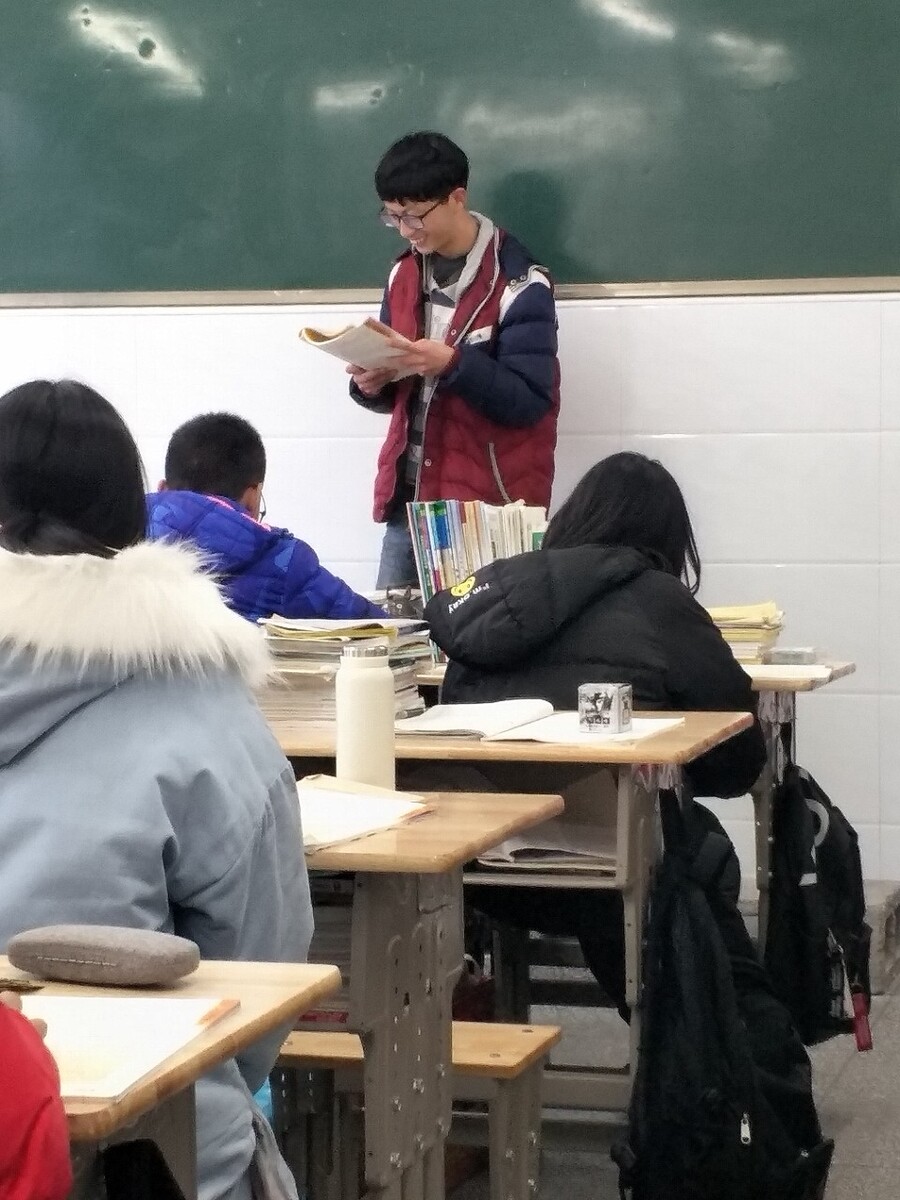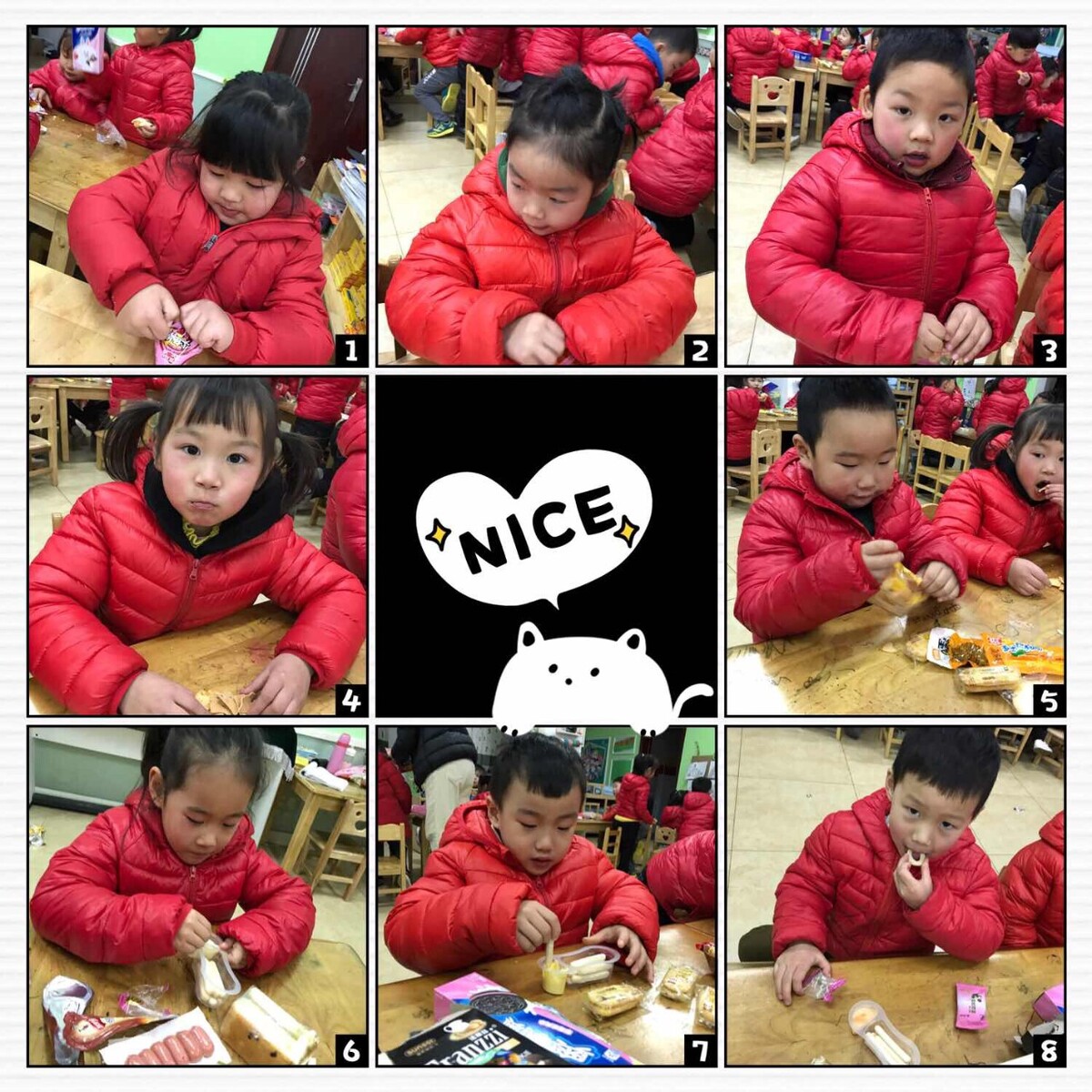自然拼读教学模板,小学自然拼读过关必备上looklistenandwrite
来源:整理 编辑:挖葱教案 2023-06-23 05:51:02
1,小学自然拼读过关必备上looklistenandwrite
look, listen, and write 看, 听, 和 写
2,自然拼音第一堂课备课

3,如何利用英语自然拼读法进行小学英语词汇教学
进行小学英语词汇教学新知识是在旧知识的基础上发展、变化、引申而来的,因此教师在备课时要根据所教知识的内容,找出与新知识有关的旧知识,看一看哪些知识学生已经把握了,哪些知识还没有完全把握,确定需要跟学生补哪些知识漏洞,课始安排什么温习内容,新授选择什么学习方法和教学方法等,这就是我们常说的备学生的知识水平,只有这样,我们在备课、上课时才能有的放矢。
4,英语自然拼读法
“自然拼读法”从科学上符合孩子们学习语言的规律,并且通过寓教于乐,在玩中学习,在学习中玩,注重对字母组合规律的把握和英语思维的培养,把“枯燥”的强迫式学习,变成了“看字读音,听音拼字”的“有趣游戏”。英语自然拼读六阶成功法第一阶:建立字母与字母自然发音之间的直接联系。第二阶:能够成功拼读元音+辅音(辅音+元音)。如:c-a ca a-t at第三阶:能够成功拼读辅音+元音+辅音。如d-o-g dog第四阶:能够成功拼读双音节或多音节单词。如sw-ea-t-er sweater第五阶:能够听音辨字,即听到单词读音就能拼出该单词。第六阶:单词量大量扩充,能够阅读英语文章。
5,如何教学生运用自然拼读法学单词
在20世纪中期产生于美国和加拿大,最早是一种教英语本族语的儿童识字、拼写和阅读的方法。这种拼读法教学指教师引导学生通过学习音图(grapheme),快速掌握英语单词中的“音形对应关系”,促进学生英语语音标准、英语单词解码、朗读与拼写能力的发展,进而提高学生英语阅读理解能力的教学。Phonics根据“字母”本身代表的“发音”,以及不同“字母组合”产生的音,进行系统的整合,让初学英语的人,借着认识字母及所代表的音源,从最基本的音与音的结合开始,反复练习以建立字母与发音的直觉音感。有了这样的音感,看到什么样的字母组合,就自然的反应出该如何发音;听到一种音,也直觉地反应出该如何拼写,即“见词能读,听音能写”。
6,如何在小学英语课堂教学中运用自然拼读法
在进行pep小学英语教学过程中,伴随着词汇量的增加和书写、阅读要求的提高,许多学生对英语学习会感到紧张,有困难。这些不良情绪又会进而影响其学习效能,产生不良循环。而老师在教学中尽管采取了很多方法和手段,也常感到不能彻底解决这个问题。在同一些学生和英语老师的谈话中,可明显感觉到老师最头疼的就是听写效果差;而学生面临最根本的困难就是单词难读、难记,有的甚至会注谐音汉字来帮助记忆。另一方面,词汇的掌握又对小学生后期的阅读和写作有着重要的意义。 有的老师建议使用音标进行教学。但小学生心智的发展水平一般低于中学生,过早涉及音标,易和拼音混淆;另外小学生的专注力一般也弱于中学生,进行枯燥的音标学习,会打消其学习兴趣。总之,对小学生而言,音标教学又是一套全新的知识系统,要重新认识其发音,形态等,其要求高于学生现有能力,易于造成新的学习困难。 分析英语单词的发音和书写规律,可以发现英语单词主流是规则的,少部分的所谓不规则发音也都有一定的发音模式,这些模式随着更多词汇的学习是可以有效掌握的。 phonics(自然拼读法)就是根据这一语言现象产生的。这种发音学习法利用5个元音字母本身代表的发音及各种字母组合产生的音来学习字母和单词,系统的归类,最终让初学英语的人建立字母与发音的直觉音感。它不同于音标教学,无需重新学习一套新的知识体系,而是去学习如何发现和掌握单词音、型的内在关联和规律。学生如果通过这样的学习和训练,能做到看到任何的字母组合就会立即直觉反应应该如何发音;听到任何发音,也立即拼写出单词。那前面提到的难题就迎刃而解了。进而,对学生的阅读、书写和学习信心和策略产生积极的影响和作用。因此我们需要探索如何在小学英语课堂教学中运用“自然拼读法”来解决单词学习上难读、难记的问题,从而提高学生的单词教学效率。
7,急需英语自然拼读法phonics学习听音辩字拼写教学并举例的教
下面是美国全国阅读权利基金会制订的phonics教纲,给你作参考。我把原件发到你信箱。 Phonics Primer You can use this Phonics Primer developed by The National Right to Read Foundation to begin teaching a child or adult to read today. This primer lists the 44 sounds in the English language and then gives steps for teaching those 44 sounds and their most common spelling patterns. In addition to learning sounds and spellings, each day the student must read lists of phonetically related words and spell these words from dictation. Phonics instruction must be reinforced by having the student read decodable text. The 44 Sounds in the English Language 5 Short-Vowel Sounds 18 Consonant Sounds 7 Digraphs short /?/ in apple short /?/ in elephant short /?/ in igloo short /?/ in octopus short /ǔ/ in umbrella /b/ in bat /k/ in cat and kite /d/ in dog /f/ in fan /g/ in goat /h/ in hat /j/ in jam /l/ in lip /m/ in map /n/ in nest /p/ in pig /r/ in rat /s/ in sun /t/ in top /v/ in van /w/ in wig /y/ in yell /z/ in zip /ch/ in chin /sh/ in ship unvoiced /th/ in thin voiced /th/ in this /hw/ in whip * /ng/ in sing /nk/ in sink * (wh is pronounced /w/ in some areas) 6 Long-Vowel Sounds 3 r-Controlled Vowel Sounds Diphthongs and Other Special Sounds long /ā/ in cake long /ē/ in feet long /ī/ in pie long /ō/ in boat long /ū/ (yoo) in mule long /ōō/ in flew /ur/ in fern, bird, and hurt /ar/ in park /or/ in fork /oi/ in oil and boy /ow/ in owl and ouch short /??/ in cook and pull /aw/ in jaw and haul /zh/ in television Steps for Teaching Phonics Step 1. Gather the materials listed below and store them together in a box. Materials for Teaching Phonics What You Need Suggestion systematic phonics program Consider Phonics Pathways (available from our online bookstore), Sing, Spell, Read, Write, or another program from Phonics Products for Home or Phonics Products for School. * phonics flashcards with the letter or letter combination (such as ou) on front and clue word (such as out) on back Consider the Individual Set of 70 Phonogram Cards (item #IPC, $10) from Spalding Education International, available at www.spalding.org. Its helpful to also purchase the Spalding Phonogram Sounds CD (item #CD, $5.00) to learn how to pronounce each sound correctly. Note: if you purchase this set from Spalding, you will not need to purchase a separate set of alphabet flashcards. decodable stories (preferably 100% decodable) If your phonics program does not contain 100% decodable stories, consider Stories Based on Phonics, available from our online bookstore, or Bob Books First, available from www.amazon.com. writing supplies: index cards, index card file, black wide-tip permanent marker, beginners wide-ruled writing tablet, 2 pencils with erasers Purchase writing supplies at any office supply store. * Note: Make sure your phonics flashcards give the proper sound or sounds for each letter or letter combination – many widely available flashcards are incorrect or incomplete. For example, the common sound of x is /ks/ as in fox, not /z/ as in xylophone or /eks/ as in x-ray. Also, the short-vowel sound of i is /?/ as in igloo, not /ī/ as in ice cream. Step 2. Teach the 5 short-vowel sounds and consonant sounds. Drill until memorized. During the first week, use the flashcards to drill the short-vowel sounds. Add several consonant sounds each day until you are drilling all short-vowel sounds and consonant sounds with your student daily. Do not rush this step. Keep drilling until all sounds are memorized, which usually takes 2-4 weeks. Tip: Work on phonics for at least 15 minutes a day, 5 days a week with your student. Frequency and consistency are more important than the length of time spent on each lesson. Short-Vowel Sounds short /?/ in apple short /?/ in elephant short /?/ in igloo short /?/ in octopus short /?/ in umbrella Consonant Sounds /b/ in bat /k/ in kite /s/ in sun /k/ in cat /l/ in lip /t/ in top /d/ in dog /m/ in map /v/ in van /f/ in fan /n/ in nest /w/ in wig /g/ in goat /p/ in pig /ks/ in fox /h/ in hat /kw/ in queen /y/ in yell /j/ in jam /r/ in rat /z/ in zip Step 3. Practice two-letter blends. Drill until blending is automatic. After your student knows the short-vowel sounds and consonant sounds, next teach him how to orally blend two letters (b-a, ba) and read two-letter blends such as: ba, be, bi, bo, bu. Two-Letter Blends b + a = ba s + a = sa j + a = ja b + e = be s + e = se j + e = je b + i = bi s + i = si j + i = ji b + o = bo s + o = so j + o = jo b + u = bu s + u = su j + u = ju Step 4. Practice three-letter blends. Drill until blending is automatic. After your student can read two-letter blends, progress to three-letter blends, that is, words. Each day, have your student read a set of short-vowel words, then dictate these same words to him. (Show him how to form each letter and correct him gently, if necessary). This not only helps him remember the phonics lesson just learned, but it greatly improves spelling. Golden Rule of Phonics: Never allow your student to skip, guess, or substitute words. Accuracy is more important than speed. Three-Letter Blends fa + t = fat ki + t = kit ro + d = rod de + n = den ma + d = mad se + t = set bo + x = box ye + s = yes tu + g = tug hi + d = hid no + t = not wi + n = win ju + g = jug pu + n = pun la + p = lap Step 5. Teach the twin-consonant endings, plurals, and two-consonant blends. Drill until blending is automatic. Twin-Consonant Endings Two-Consonant Blends Two-Consonant Blends puff blab stun, fist sell brag swam kiss club trot fuzz crop twin lock drag fact fled raft Plurals: frog bulb cats (sounds like /s/) glum held beds (sounds like /z/) grip elf plug sulk prim film scat help skip, mask silt sled jump smug hand snip mint spot, gasp kept Step 6. Teach the digraphs (ch, sh, th, wh, ng, nk). A digraph consists of two consonants that form a new sound when combined. Also teach three-consonant blends. Digraphs Three-Consonant Blends chin, such, patch (silent t) scruff ship, wish split thin, with (unvoiced /th/) strap this (voiced /th/) thrill whip sang, sing, song, sung sank, sink, honk, sunk Step 7. Introduce a few high-frequency words necessary to read most sentences. After your student can read three-letter and four-letter words easily, its time to add a few high-frequency words that are necessary to read most sentences. Some high-frequency words are phonetically regular (such as “or”), but are introduced out of sequence because of their importance. Other words are truly irregular, because they contain one or more letters that dont follow the rules of phonics (such as “once” and “who”). The Basic High-Frequency Words table lists the most important words. Write each word on an index card. Introduce three or four new words a week. Drill your student on these words everyday, encouraging him to sound out as much of the word as possible (usually the vowel sound is the only irregular part). As your student masters each word, file the card in the card file under “Words I Know.” When your student comes across a new “wacky” word (such as “sugar” in which the “s” is pronounced /sh/), make up a new index card and file it under “Words To Learn.” Tip: What distinguishes this high-frequency word list from the typical “sight word” list? Many words in the list below cannot be completely sounded out, either because they contain one or more letters that dont “follow the rules” or the rule is learned later. In contrast, the typical “sight word” list contains mostly phonetically regular words (such as “and” and “when”) that the student is forced to memorize simply because he has never been taught to sound them out. Basic High-Frequency Words Introduce after student can read short-vowel words, /th/, and /sh/ Introduce after student can read long-vowel words A vowel by itself says its name: a, I “e” at the end of a short word says its name: be, he, me, we, she, the* “o” at the end of these words says its name: no, go, so “or” says /or/: or, for do, to, into, of, off, put * also pronounced /th?/ was, were, are doing, does said, says, have, give you, your, yours they, their, there where, what, why, who once, one, come, some done, none two, too Step 8. Teach the long-vowel sounds and their spellings. Note that there are five common spellings for each long-vowel sound. Also teach the “Silent-e Rule”: When a one-syllable word ends in “e” and has the pattern vce (vowel-consonant-e), the first vowel says its name and the “e” is silent. Long-Vowel Sounds Common Spellings Less Common Spellings long /ā/ cake, rain, pay, eight, baby steak, they, vein long /ē/ Pete, me, feet, sea, bunny key, field, cookie, receive, pizza long /ī/ bike, hi, fly, pie, night rye, type long /ō/ hope, go, boat, toe, snow soul, though long /ū/ & /ōō/ mule, blue, boot, tuna, flew fruit, soup, through, feud Step 9. Teach the r-controlled vowel sounds and their spellings. r-Controlled Vowel Sounds Common Spellings Less Common Spellings /ur/ fern, bird, hurt pure, dollar, worm, earth /ar/ farm orange, forest /or/ fork door, pour, roar, more, war Step 10. Teach the diphthongs /oi/ and /ow/ and their spellings. A diphthong consists of two vowels that form a new sound when combined. Also teach other special sounds. Sound Common Spellings /oi/ oil, boy /ow/ owl, ouch short /??/ cook, pull /sh/ vacation, session, facial /zh/ vision Step 11. Teach /aw/, /awl/, /awk/ and their spellings. Sound Common Spellings /aw/ jaw, haul, wash, squash /awl/ bald, wall /awk/ talk Step 12. Teach these sounds and spelling patterns. Sound Common Spellings /s/ spelled c Rule: c followed by e, i, or y sounds like /s/. cent, face, cinder, cycle /j/ spelled g, ge, dge Rule: g followed by e, i, or y usually sounds like /j/. frigid, age, fudge, gym /f/ spelled ph Rule: ph sounds like /f/ in words of Greek origin. phone, phonics /k/ spelled ch Rule: ch sounds like /k/ in words of Greek origin. chorus, Christmas /sh/ spelled ch Rule: ch sounds like /sh/ in words of French origin. chef, champagne Note: This Phonics Primer does not contain all English spelling patterns. Consult a good phonics program such as one from Phonics Products from Home or Phonics Products for School for additional spelling patterns and rules. Most products contain detailed instructions and practice reading selections. Step 13. After 3 to 4 months of daily phonics instruction, begin introducing decodable stories. Important: All sounds and spellings in Steps 2 - 12 should be introduced within the first 4 months of phonics instruction. After 3 to 4 months of reading lists of words and sentences, your student should be ready to read decodable stories such as Stories Based on Phonics or Bob Books First. The student should read all stories aloud, carefully and accurately. Help him sound out difficult words, as needed. Explain the meaning of all new words. Encourage him to read each story several times to gain fluency, but dont let him memorize the story (reciting a story from memory is not reading). Model fluent reading by reading a sentence aloud with expression, then asking him to repeat what you read with the same tone of voice. Explain and demonstrate the meaning of basic punctuation (period = stop, comma = pause, exclamation point = speak with excitement, question mark = raise the pitch of your voice on the last word to ask a question.) Step 14. Begin introducing “easy-to-read” books. After the student masters decodable stories, let him move on to easy books such as those by Dr. Seuss (Hop on Pop; One Fish, Two Fish, Red Fish, Blue Fish; Ten Apples Up on Top; Green Eggs and Ham; and so on), P. D. Eastman (Are You My Mother?; Go Dog, Go!; A Fish Out of Water), and Cynthia Rylant (Henry and Mudge series; Poppleton series; Mr. Putter and Tabby series). As your student reads each book, add new wacky words to the Words To Learn file and review daily, if necessary. Continue teaching the lessons in the phonics program – dont stop just because your student can read. Most children need 1 to 2 years of reinforcement before their phonics knowledge becomes permanent. Step 15. Continue to give phonetically based spelling lists. Even after your student has finished the phonics program, make sure to reinforce his phonics knowledge by giving phonetically based spelling lists each week at least through third grade. Revised: 6/05
文章TAG:
自然拼读教学模板自然 自然拼读 教学
大家都在看
-

初三化学氧气教案课堂小结,中学化学知识点
2022-12-14
-

中庸 节选 教案,中庸:喜怒哀乐不表,都表中段
2023-01-01
-

幼儿园数学超市理货员教案,幼儿园小班数学教案6我收集的文章
2023-01-27
-

社会绘本好朋友教案,友情绘本让孩子感受到友谊的温暖和乐趣
2023-02-02
-

洗涤用品不能吃教案,随便吃东西危害多!这些东西不要乱来
2023-02-07
-

小班手工教案轻黏土《彩虹》,彩虹糖教案教材
2023-02-08
-

中班活动教案 中国结,幼儿园中国结知多少?学一学(一)
2023-02-13
-

消灭大蚊子科常教案,幼儿园音乐节拍蚊子教案一文看懂
2023-02-25
-

学前班数学加法应用题教案,加减法应用题讲两个数练一练字
2023-02-26
-

歌曲幼儿园里好事多教案,幼儿园安全教育活动教案1设计意图
2022-12-31
-

幼儿园音乐活动教案母鸭带小鸭,幼儿园小班教案怎么写
2023-01-21
-

幼儿园寓言拔苗助长教案,拔苗助长不是好的而是害了它
2023-01-26
-

语文教案 月光启蒙,语文课本第十八课-3启蒙有何不同?
2023-01-30
-

夏天的雷雨幼儿教案,第一集
2023-02-06
-

小班幼儿园活动公开课教案,幼儿园小班主题精品课程教案
2023-02-08




















